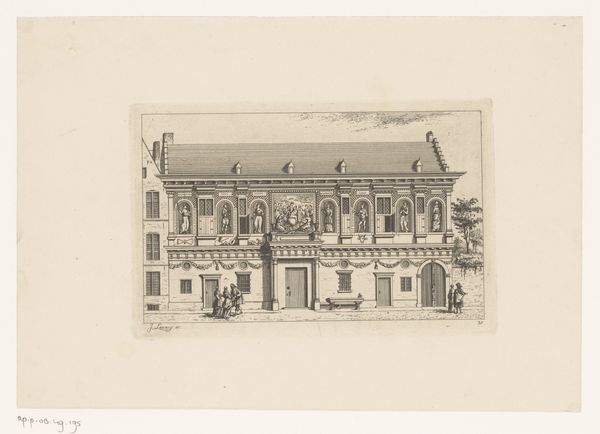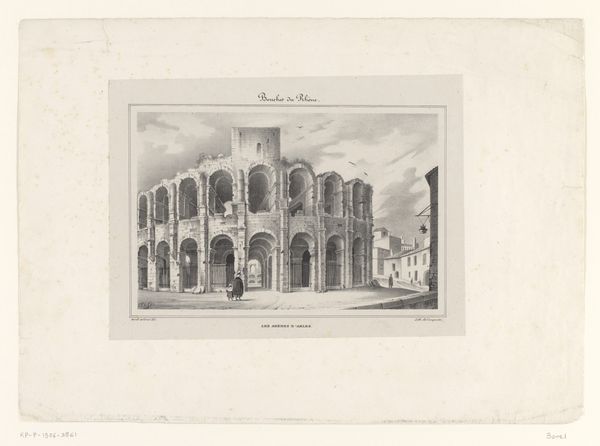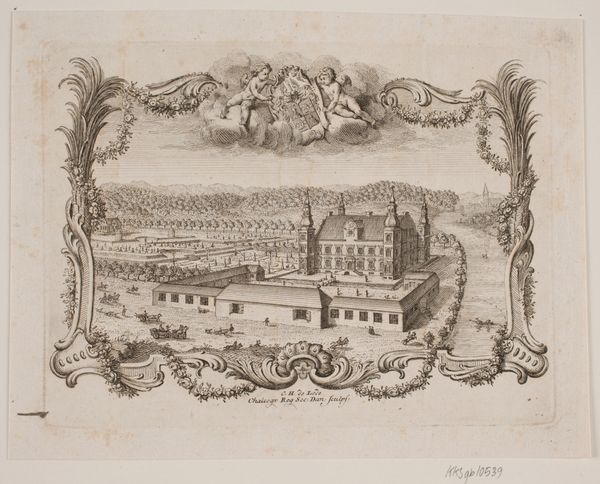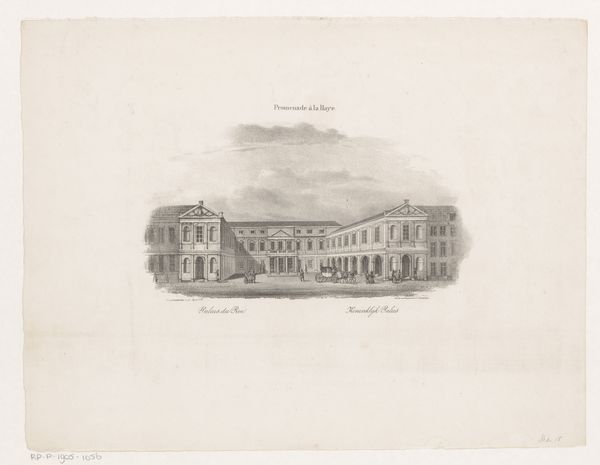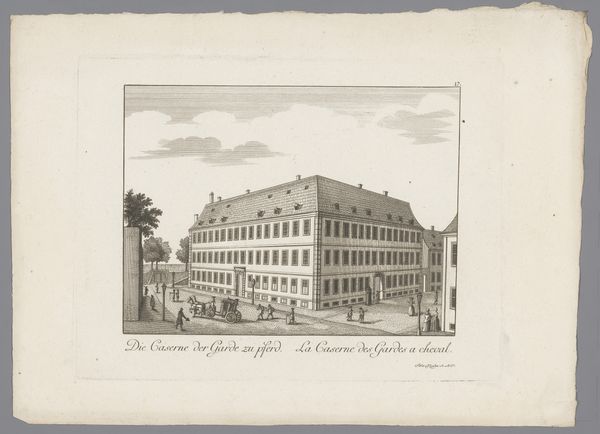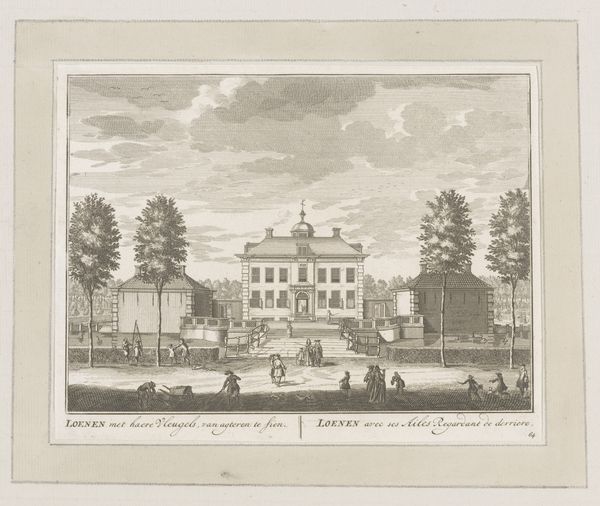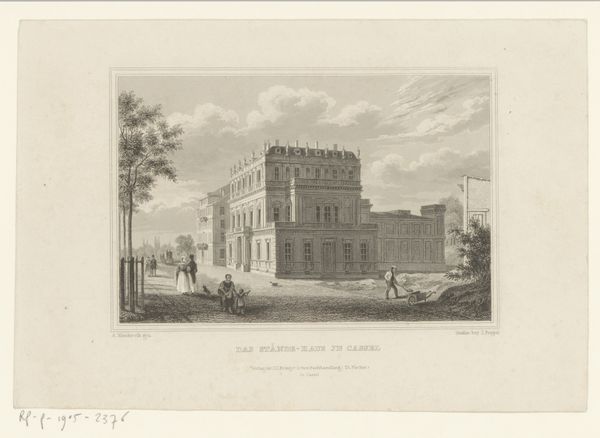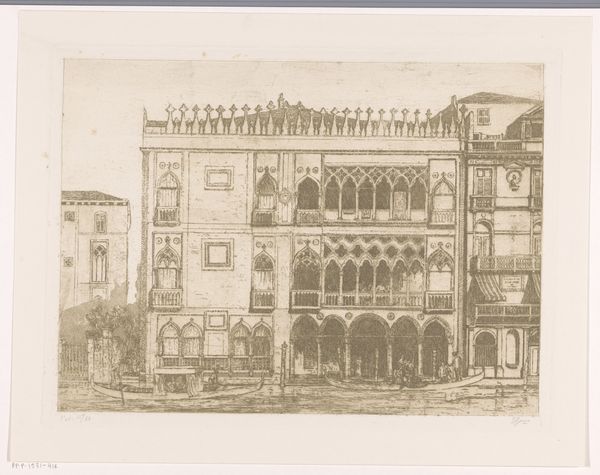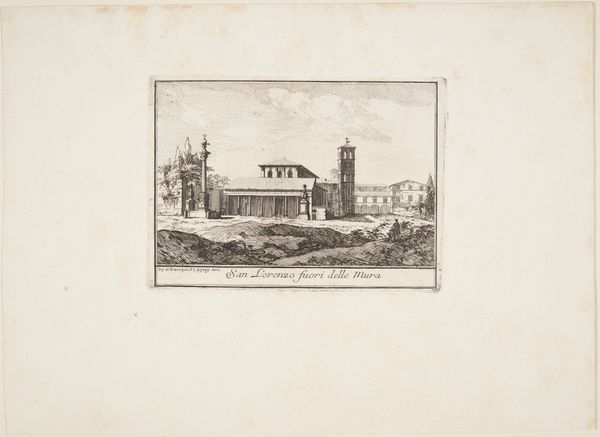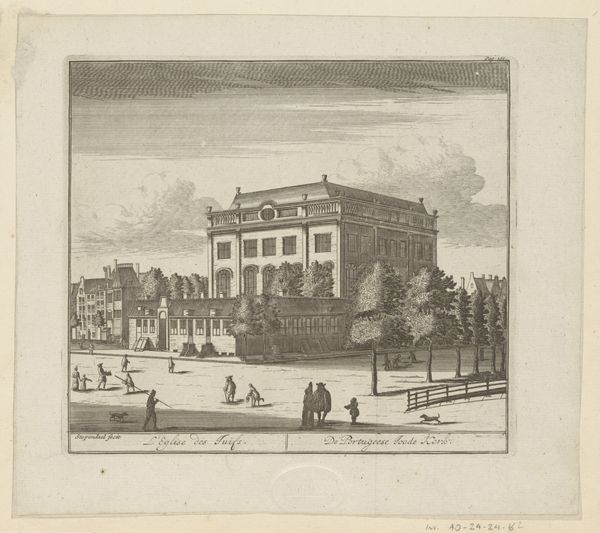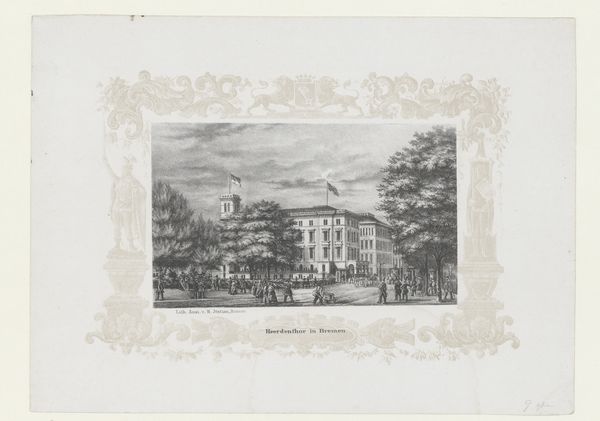
print, etching, architecture
#
neoclacissism
# print
#
etching
#
landscape
#
etching
#
cityscape
#
architecture
#
realism
Dimensions: height 230 mm, width 295 mm
Copyright: Rijks Museum: Open Domain
Editor: This print, "Stationsgebouw in Rotterdam," dating back to 1850, made by Hendrik Wilhelmus Last, really gives a sense of what it must have been like experiencing a train station for the first time. It’s got a formal, almost neoclassical air, despite capturing such a modern subject. What jumps out at you? Curator: What I notice immediately is how the architecture speaks to both progress and power. This wasn’t just about moving people; it was about signaling the rise of a nation through technology and imposing structures. Rotterdam, as a port city, held strategic importance, and this station broadcasted Dutch ambition. Consider the clean lines combined with decorative flourishes, almost theatrical. Do you think that the artist intended to make an explicitly political statement about Dutch industrial might? Editor: I'm not sure about "explicitly," but it certainly feels aspirational! It's not just a practical building, it's almost a monument. But looking closer at the printmaking technique... could its prevalence at that time period and lower cost also have made it an appealing media to the artist to ensure maximum viewership by a broad public, thus shaping its public reception? Curator: Absolutely! Printmaking allowed for mass dissemination. Last’s choice ensured his image circulated widely, shaping public perception of the railway and its cultural significance, normalizing progress while also projecting a carefully curated image of national identity. The "realism" here isn't simply mimetic; it's manufactured, serving a particular ideology of progress. Editor: So, the artwork isn't just showing us a building. Curator: Precisely. It is demonstrating how public imagery functions to build collective identities and shape a national narrative. Consider how it invited viewers to participate, albeit passively, in the Dutch advancement. Editor: That is a new way to look at the "Stationgebouw." Thanks! Curator: My pleasure! Looking at the way the politics of representation affect an image is a rewarding experience.
Comments
No comments
Be the first to comment and join the conversation on the ultimate creative platform.
